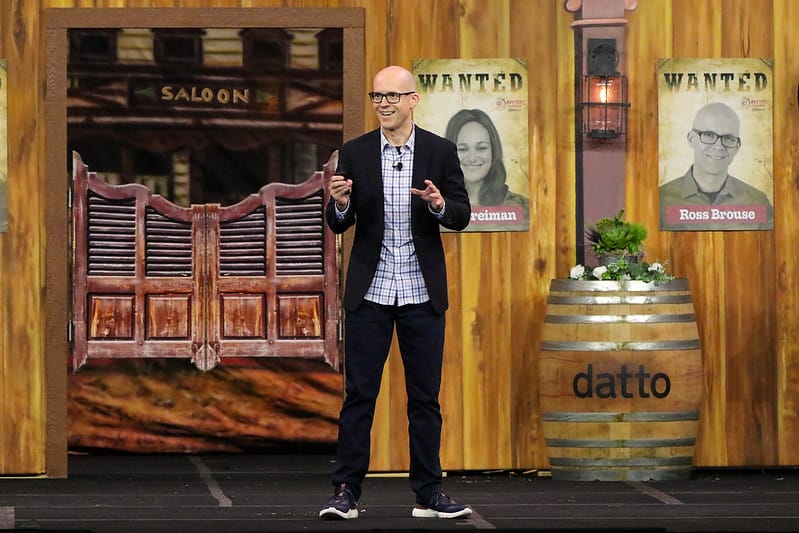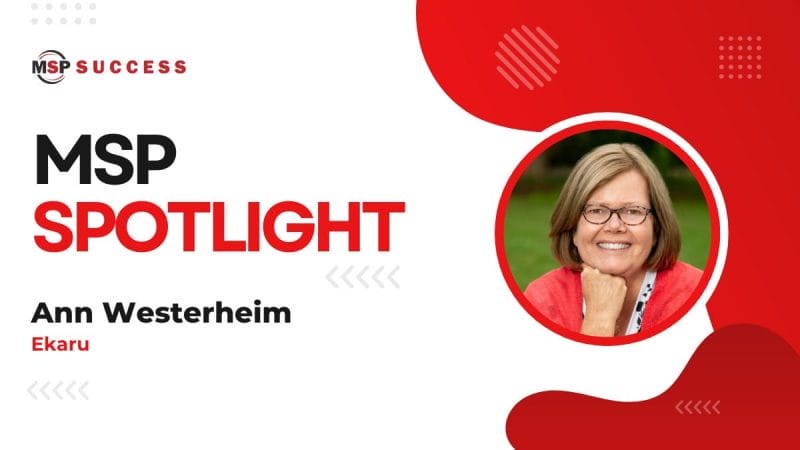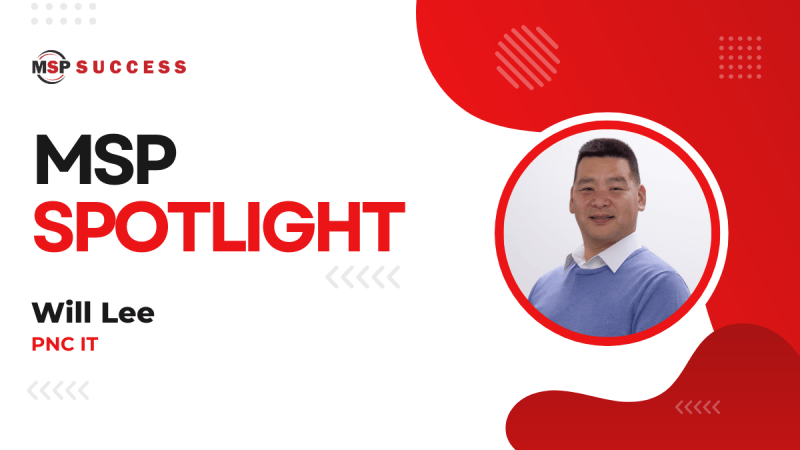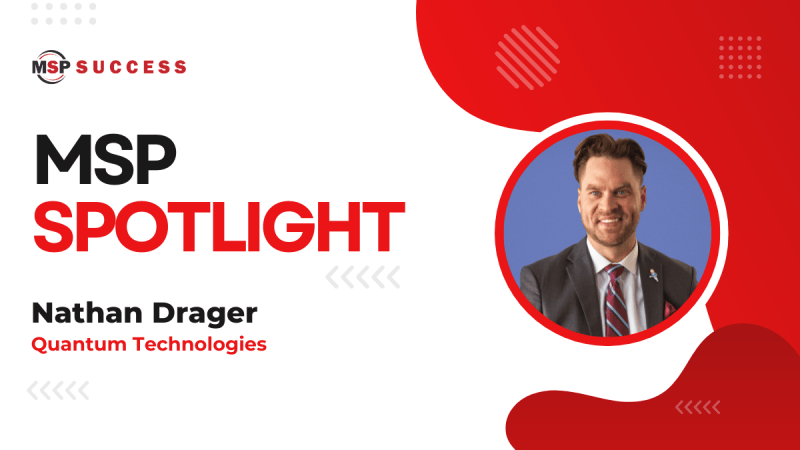- Company: Continuous Networks
- Founded: 1997
- Headquartered: East Rutherford, NJ
- Geographical Markets Served: New Jersey and New York
- Top Growth Indicator: Monthly recurring revenue (MRR)
- YoY Percentage Of Revenue Growth: 33.5% revenue, 65+% profitability
- Founders: Jason Silverglate & Ross Brouse
What Are The Top 3 Business Indicators You Use To Measure Your Company And Why?
Everything begins with gross margin. We’re sitting at 69%. If that’s too low, it’ll decrease everything else. Next is labor efficiency. Labor productivity drives profit and helps us manage the finances of our business. We use the Greg Crabtree Simple Numbers process that we got through Technology Marketing Toolkit. There are two factors to labor efficiency: direct and management. Direct labor is your value-added revenue divided by the wages of the people who actually provide the service. Your management is your gross margin divided by your management wages. Anybody who’s not taking care of the customer or providing the service would be your management-labor efficiency ratio. They talk about it in terms of a multiplier, not a fraction. This is the biggest metric I manage to. It’s a percentage of sales. You take your revenue minus your cost of goods sold and divide it by the cost of your direct labor. A good ratio expressed in terms of percentage is about 15%. We’re sitting at almost 20%.
This is an important metric because it’s a driver of business growth. The more revenue you can generate from your highest cost, which is your staff, the more profitable you’ll be, the better business you’re providing, and the more your business will be worth. If your labor efficiency ratio is too low, it means you won’t be profitable because you’re spending too much on labor, and that labor is not driving the revenue you need, or your cost of goods is just way too high. The third one is core capital, which drives the growth of the business and owners. Assuming there is no line of credit or debt, everything beyond core capital that you take out of your business is for your own reinvesting in your business, growing your business, or your own personal wealth.
What Is The Top Lesson You Had To Learn To Kick-Start Your Business Growth?
Hire, delegate, and start wearing fewer hats.
Your Profitability Is On Track To Exceed A 65% Increase Over Last Year. What Would You Say Is The Single Biggest Secret To Your Success?
Remaining consistent and staying the course. When you’re doing something, people love to ask, “How is that working? What are your results? How much money have you generated from it?” But most people don’t want to say, “Nothing. I haven’t generated anything yet. I only started it three months ago.” People don’t want to say that because there’s this mentality that if you do something for a month or two, you should have immediate results. And I know that life doesn’t work that way. I know that humans don’t work that way. You can get better at it and shorten those results, but anything great didn’t happen overnight. It took a lot of grit to get to that point. Staying the course, that’s what really makes the difference.
What Would You Say Is The Biggest Challenge You Had To Overcome This Past Year Related To Reaching That Growth?
Letting go. Start trusting other people to do it, even though they won’t do it as well as you do it. I learned you’ve got to let go and focus on where you’re good and where you can really provide the greatest value to the business. It can be hard, especially with other leadership and partners. I have the ability to see that this is where I need to focus, and even though there are problems in other parts of the business, I can’t touch everything all the time. People have a tendency, especially business owners, to see the problem, and they want to go roll up their sleeves and get into the trenches with everybody else. You must resist the urge to do that. You must stand there and be the commander instead. Ask some questions and put intent and strategy in place. Then let them try and execute upon that rather than you getting in there and doing it with them.
What Is A Partner Or Tool That Helped You Along The Way?
Kaseya Network Detective and Cyber Hawk are good ways to keep your clients updated on what’s going on inside of their networks and to be proactive. These help us with our third core value, which is “Proactivity prevents problems.”
Who Would You Say Is The Most Impactful Business Leader Whose Techniques Or Leadership Style You Try To Emulate Or Are Influenced By And Why?
There are two. From the sales and marketing perspective, it’s Donald Miller. He helped us understand the external versus the internal struggles that customers face. Companies are all selling solutions to external problems when people are buying on the internal ones. From a business operations perspective, it would be Jocko Willink and his company Echelon Front. He talks about his four laws of combat: cover and move, keep it simple, prioritize and execute, and decentralized command. That spoke to me a lot because I came from a family with a military background and a military mindset. My father spent his entire life in the military, my younger brother served in the Air Force in Afghanistan, and my wife’s father also served in the Air Force. Willink helped me realize that it’s not the way you think it is. It’s not somebody standing there calling all the shots. The concept of decentralized command, where you can have groups of people that can make strategic decisions without having to get approval, is huge from an operations perspective. When you bottleneck people, whether it’s an owner or a manager — because everything must go through them — you create these horrific inefficiencies, and you hold your team back from realizing their true potential. His book, “Extreme Ownership,” and his process of his four laws of combat really helped me see that.
If You Could Recommend A Book To Other MSPs Or SMBs Trying To Grow Their Business, What Would You Say They Should Read?
“Building A StoryBrand” by Donald Miller and “Extreme Ownership” by Jocko Willink. I’d also recommend “Atomic Habits” by James Clear. While not specifically business, “Atomic Habits” was my personal growth bible. The business concepts I understood, and I could do them, but I wasn’t getting any real traction with them. “Atomic Habits” was the glue because it changed my habits and forced me to focus on putting myself first, my family second, and my business third. Without “Atomic Habits,” I would have never discovered that.
Where Would You Suggest Other MSPs Focus Their Sales And Marketing Efforts?
This past year I was a finalist for Robin Robins’ Better Your Best competition at Technology Marketing Toolkit’s Bootcamp. Along with everything I have learned from Robin over the years, I used a CyberScore Assessment that I built to generate $1.2 million in additional net profit in 2020. I would recommend checking out that presentation and go from there!
To see Ross talk about his marketing strategy, go to MSPsuccessMagazine.com/ross.

















